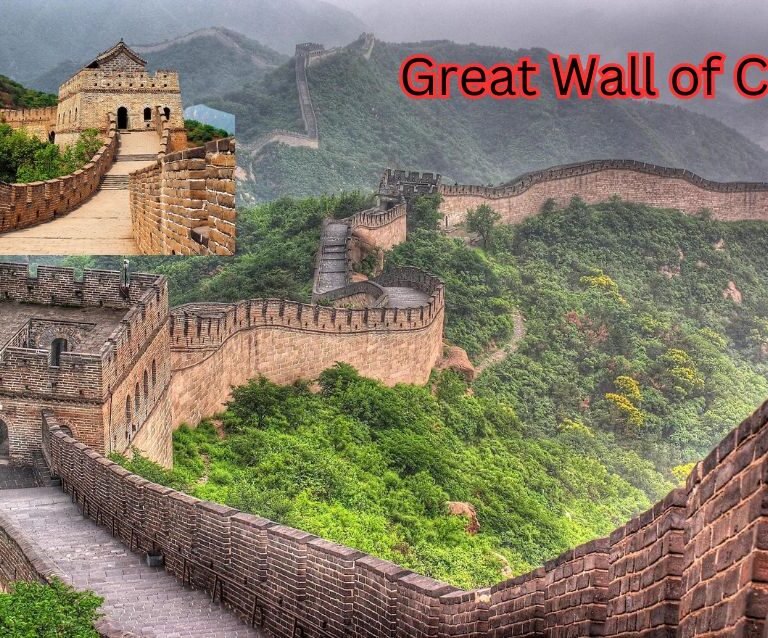Officially known as the People’s Republic of China
Officially known as the People’s Republic of China, this vast nation occupies a pivotal position in East Asia and continues to be a focal point for global attention. Covering an expansive geographic area, China stretches across diverse terrains ranging from the mountainous Himalayas to the sprawling deserts of the Gobi, and it boasts an impressive landscape that caters to a range of climatic conditions. Its sheer size allows it to span five time zones, making it one of the largest countries in the world by land area.
With a population exceeding 1.4 billion people, China holds the title of the most populous country on the planet. The sheer magnitude of its demographic composition has implications for various aspects of global economics and politics. Urban mega-cities like Beijing, Shanghai, and Guangzhou are bustling hubs of economic activity, while rural areas maintain traditional practices that contribute to the diverse cultural tapestry of the nation.
China’s significance is further underlined by its geopolitical landscape. Sharing borders with fourteen countries, including Russia, India, and Vietnam, its strategic location underscores its influence in regional and international affairs. The nation’s vast expanse connects to several key corridors vital for trade, diplomacy, and security. This strategic position enhances China’s capability to act as a major player on the world stage and positions it as a crucial partner in various global initiatives.
In essence, the People’s Republic of China is an intricate mosaic of history, culture, and modernity. Its geographical, demographic, and geopolitical features make it a land of opportunities and boundless growth, offering a unique blend of ancient traditions and contemporary innovations. This overview provides a glimpse into the complexities and potentials that define China today.
Historical and Cultural Richness
China’s rich history and culture have profoundly influenced global civilization for over 5,000 years. As one of the world’s oldest continuous civilizations, China has developed a unique tapestry of customs, traditions, and contributions to various fields, including art, philosophy, science, and architecture. The story of China’s historical and cultural richness begins with its ancient dynasties, such as the Shang and Zhou, which laid the groundwork for its subsequent development and cultural prowess.
The Great Wall of China stands as a monumental testament to the ingenuity and determination of ancient Chinese engineering. Stretching over 13,000 miles, it represents the relentless efforts to protect the Chinese Empire from external invasions. Equally significant is the Terracotta Army, a vast collection of terra-cotta sculptures depicting the armies of the first Emperor of China, Qin Shi Huang. Discovered in 1974, it is one of the greatest archaeological finds of the 20th century, showcasing the extraordinary artistic and military achievements of ancient China.
The Forbidden City in Beijing, another iconic landmark, served as the imperial palace for centuries. It is an epitome of traditional Chinese palatial architecture and was the political heart of the country during the Ming and Qing Dynasties. The city’s layout and structure reflect the critical Confucian principles that governed the lives of Chinese emperors and their subjects, emphasizing harmony between human beings and their environment.
China’s cultural practices are equally diverse and fascinating. Major festivals like the Chinese New Year, Dragon Boat Festival, and Mid-Autumn Festival highlight traditional values, family reunions, and the celebration of ancient myths and legends. These festivals are characterized by unique foods, rituals, and performances that offer a vibrant glimpse into Chinese life across different regions.
Moreover, Chinese philosophy, with luminaries like Confucius and Laozi, has imparted foundational ideas about morality, governance, and existential inquiry, which continue to influence Chinese society and the world. Traditional Chinese arts, such as calligraphy, painting, and silk weaving, are other avenues through which China’s cultural opulence manifests itself, leaving an indelible mark on global artistic traditions.
In essence, China’s historical and cultural richness is a dynamic interplay of heritage and innovation, offering a lasting legacy for the world to marvel at and learn from.
Natural Wonders and Tourist Attractions
China is a vast country, renowned for its rich tapestry of natural wonders and tourist attractions that captivate travelers from around the globe. The Yangtze River, the longest river in Asia, offers an extraordinary journey through diverse landscapes and cultural landmarks. Its dramatic gorges and vibrant river towns are a testament to China’s geographical and cultural diversity.
Another standout natural gem is Guilin, celebrated for its breathtaking karst mountains and serene river scenes. The picturesque landscapes of Guilin have long inspired poets and artists, making it a must-visit for nature enthusiasts and cultural explorers alike. Visitors can cruise along the Li River, taking in the enchanting scenery, which has been described as ‘a hundred miles of miniature landscapes’ in Chinese literature.
Zhangjiajie National Forest Park, often referred to as the inspiration for the floating mountains in the movie Avatar, is another treasure not to be missed. Its towering sandstone pillars and lush forests create a surreal and magical experience. It is a haven for hikers and anyone seeking to connect with the unspoiled beauty of nature.
In addition to its natural wonders, China’s major cities also serve as significant travel destinations, each offering a unique blend of modernity and history. Beijing, the capital city, is home to iconic landmarks like the Great Wall, the Forbidden City, and the Summer Palace. These sites reflect China’s ancient history and its cultural grandeur.
Shanghai, a bustling metropolis, represents the pinnacle of China’s economic growth and architectural innovation. Visitors can enjoy a skyline dotted with futuristic skyscrapers, explore the historic Bund, and experience the vibrant nightlife and modern amenities of this global city.
Xi’an, once the eastern terminus of the Silk Road, offers a historical journey through China’s ancient past. The city is famous for the Terracotta Army, an archaeological wonder that continues to attract millions of tourists. The ancient city walls and the Muslim Quarter further enhance Xi’an’s appeal as a culturally rich and profound destination.
From the natural beauty of the Yangtze River and Guilin, to the historical and modern marvels of Beijing, Shanghai, and Xi’an, China presents a wide array of attractions that promise unforgettable experiences for every traveler.
Educational Opportunities in China
China’s educational landscape is both expansive and rich, characterized by its world-renowned universities like Tsinghua University and Peking University. These institutions are at the forefront of cutting-edge research and academic excellence, offering a plethora of international programs that attract students from around the globe.
One of the significant advantages for foreign students in China is the availability of various scholarships. These grants make it financially feasible for international learners to pursue their academic goals while experiencing a new cultural milieu. The Chinese government, universities, and private organizations offer multiple scholarship opportunities, fostering an environment where education can thrive without the heavy burden of financial constraints.
The diversity of courses available at Chinese universities is another compelling aspect. From engineering and technology to arts and humanities, the breadth of programs ensures that students can find a course that aligns with their interests and career aspirations. The international programs are designed to cater to the global student community, with many courses offered in English and supported by a robust academic framework.
Cross-cultural learning experiences form a core aspect of education in China. With a mix of students from various countries, the learning environment is inherently international. This diversity enriches the classroom experience, promoting global perspectives and fostering mutual understanding among students of different cultural backgrounds.
Language learning opportunities are abundant in China. Apart from specialized language programs in Mandarin Chinese, many universities offer language courses as part of their curricula for international students. These programs focus not just on linguistic proficiency but also on cultural immersion, helping students gain a holistic understanding of Chinese society.
The infrastructure supporting educational excellence in China is second to none. State-of-the-art laboratories, extensive libraries, and modern classrooms equipped with the latest technological advancements create an ideal environment for academic pursuit. Moreover, universities continuously invest in enhancing their facilities and resources to stay at the forefront of global education standards.
In summary, educational opportunities in China are vast and versatile, offering an enriching blend of academic rigor, cultural immersion, and financial support. Whether through premier institutions like Tsinghua University and Peking University or the diverse range of programs and scholarships available, China stands as a beacon for those seeking exceptional educational experiences.
China’s rapid economic growth over recent decades has solidified its position as a global economic powerhouse. Once primarily an agrarian economy, China has transformed itself into a diverse and dynamic economic entity. The country’s GDP growth has consistently outpaced global averages, driven by a combination of strategic governmental policies, burgeoning domestic demand, and impressive strides in technology and manufacturing.
One of the most significant drivers of China’s economic prowess is its technology sector. Innovators and tech giants like Huawei, Alibaba, and Tencent have propelled China to the forefront of global technological advances, encompassing areas such as artificial intelligence, e-commerce, and telecommunications. Meanwhile, the manufacturing sector remains robust, with China continuing to be dubbed the “world’s factory.” The production of electronics, automotive components, and consumer goods are key contributors to this sector’s dynamism.
In addition to technology and manufacturing, the services sector has shown tremendous growth. Financial services, real estate, and tourism have played substantial roles in enriching China’s economic fabric. The rise of a burgeoning middle class has spurred domestic consumption, further fueling the expansion of various service-oriented industries.
Major urban centers like Shenzhen, Hong Kong, and Shanghai stand out as critical business hubs. Shenzhen, known as China’s Silicon Valley, boasts a dense concentration of high-tech companies and startups. Hong Kong, with its sophisticated financial system, acts as a conduit for international investment and serves as a gateway to mainland China. Shanghai, often referred to as the ‘Pearl of the Orient,’ is an essential global financial center, home to the Shanghai Stock Exchange and a myriad of multinational corporations.
The Belt and Road Initiative (BRI) epitomizes China’s expansive economic ambitions on the international stage. This colossal infrastructure and investment project aims to enhance global trade routes and foster economic cooperation between Asia, Europe, and Africa. By investing in infrastructural projects across numerous countries, China is not only facilitating international trade but also reinforcing its influence in worldwide economic affairs.
China’s role in international trade and investment is undeniable. It has forged robust trade partnerships worldwide, becoming a pivotal player in global supply chains. With steadfast economic policies and strategic initiatives, China continues to drive growth and opportunities, cementing its stature as an indispensable entity in the global economic landscape.
Living in China: Cost, Lifestyle, and Expat Communities
Living in China presents a diverse and enriching experience, encompassing varying costs, lifestyle aspects, and community support systems. The cost of living widely differs between major metropolises such as Beijing, Shanghai, and Guangzhou, and smaller cities or rural areas. Metropolitan areas tend to be more expensive, with housing, dining, and transportation costs reflecting their international status. Conversely, in smaller cities, living expenses are considerably lower, making them viable options for those seeking a more budget-friendly lifestyle.
Housing in China offers a broad spectrum, ranging from high-end luxury apartments to more modest living arrangements. Rental prices fluctuate based on the city and the district within it. For example, an apartment in the heart of Beijing may be significantly pricier than one in a suburban area. Prospective expatriates can find suitable housing options through real estate agencies or online platforms that cater to foreign residents.
Healthcare in China has seen vast improvements in recent years, with modern hospitals and clinics available in urban centers. The public healthcare system is accessible to expatriates, though many opt for private insurance for comprehensive coverage. These private facilities often provide services in multiple languages, catering specifically to the needs of foreigners.
Transportation is both efficient and affordable, with robust networks of subways, buses, and taxis readily available in most cities. Bike-sharing and ride-hailing apps have also become integral to urban mobility. China’s extensive high-speed rail network facilitates quick and convenient travel between cities, further adding to the perks of residency.
The expatriate communities across China are vibrant and dynamic, with numerous support networks in place. Social clubs, language exchange groups, and professional organizations provide ample opportunities for networking and camaraderie. International schools and cultural centres also offer resources that ease the transition and integration for expatriate families.
In summary, life in China is characterized by a blend of modern conveniences and rich cultural experiences. Whether one seeks the hustle and bustle of city life or the tranquility of smaller towns, China’s diverse living environment caters to a vast array of preferences. With robust support and vibrant expatriate communities, residents can expect a fulfilling and culturally immersive experience.
Tips for Traveling in China
Embarking on a journey to China, a vast and diverse country, requires some preparation to ensure a smooth and enjoyable experience. One of the first steps is addressing visa requirements. Depending on your nationality, applying for a tourist visa (Type L) is often necessary. Ensure all documents, including an invitation letter if needed, are submitted well in advance.
The best times to visit China are during spring (April to June) and autumn (September to October). These seasons offer moderate temperatures and stunning natural scenery. Avoid traveling during the Chinese New Year and National Day Golden Week, as these peak periods can be crowded and more expensive.
China boasts an extensive and efficient transportation network, including high-speed trains, metros, and flights. Familiarize yourself with the major transport hubs and consider purchasing a reloadable transport card for ease of travel. Although major cities have English signage, having a translation app can be invaluable.
Understanding the local etiquette and safety norms is crucial. Showing respect to elders, avoiding public displays of affection, and understanding the importance of ‘face’—social reputation—can go a long way in fostering positive interactions. China is generally safe for travelers, but taking standard precautions, such as avoiding deserted areas at night and keeping your belongings secure, is advisable.
Must-visit destinations include the Great Wall of China, the majestic palaces in Beijing’s Forbidden City, and the iconic skyline of Shanghai. For a more tranquil experience, the picturesque landscapes of Guilin and the historic town of Xi’an are highly recommended.
Learning essential phrases in Mandarin can significantly enhance your travel experience. Phrases such as “Nǐ hǎo” (Hello), “Xièxiè” (Thank you), and “Duōshǎo qián?” (How much is this?) can be very helpful. Communication tools like translation apps and offline maps can assist in overcoming language barriers.
Overall, being well-prepared and respectful while traveling in China can lead to a rich and rewarding experience. By understanding visa requirements, optimal travel times, and key cultural norms, you’ll be well-equipped to explore this dynamic country.
Future Prospects
In exploring China, we have witnessed a land of opportunities with boundless potential for growth. From its majestic landscapes and ancient culture to its dynamic cities laden with modern marvels, China offers a profound travel destination. The mesmerizing Great Wall, the serene beauty of the West Lake, and the futuristic skylines of cities like Shanghai and Beijing illustrate the country’s multidimensional appeal.
Yet, beyond its touristic allure, China stands as a powerhouse of educational and business opportunities. Prestigious institutions such as Peking University and Tsinghua University attract global talents, while pivotal cities are becoming hotbeds for innovation and entrepreneurship. Notable developments in technology, manufacturing, and green energy underscore China’s role as a leader in global economic trends.
As we look ahead, China’s prospects continue to shine brightly. Its Belt and Road Initiative is reshaping global trade routes, fostering international collaboration and providing fresh avenues for economic growth. Meanwhile, shifts towards sustainable development indicate a keen awareness of future challenges and a commitment to addressing them. China’s expanding influence in diplomacy, economics, and environmental stewardship positions it as a key player on the global stage.
For those contemplating travel, China promises an unforgettable experience filled with rich traditions and diverse natural beauty. For business professionals and academics, it offers fertile ground for innovative ideas and ventures. As the nation continues to evolve, the opportunities within its borders multiply, inviting individuals from around the world to explore, engage, and grow.
Considering China’s dual appeal as a premier travel destination and a thriving hub of educational and business opportunities, it emerges as a country worthy of attention and investment. Whether you seek cultural enrichment, academic excellence, or entrepreneurial success, China presents a landscape ready for exploration and boundless growth.








